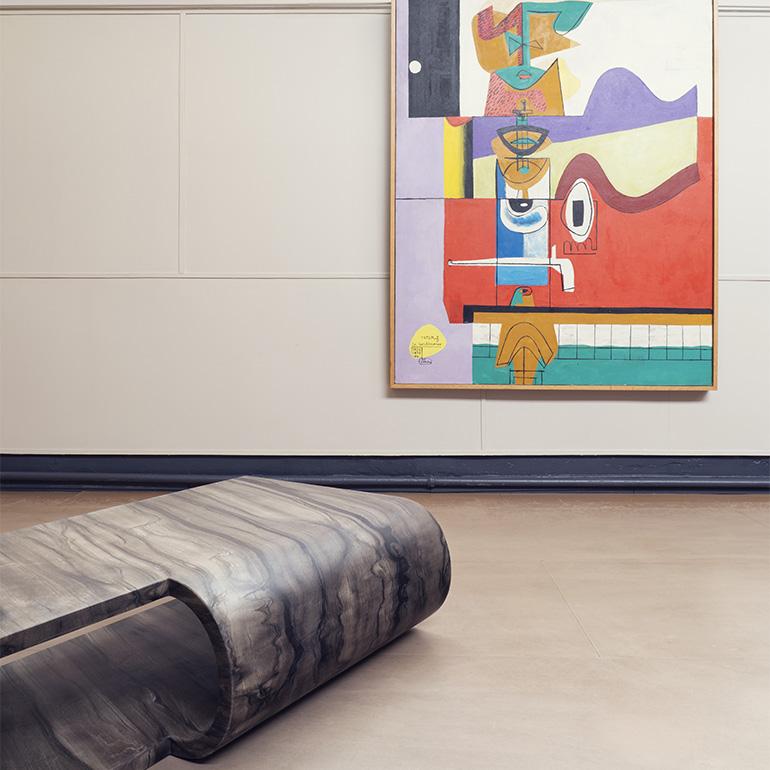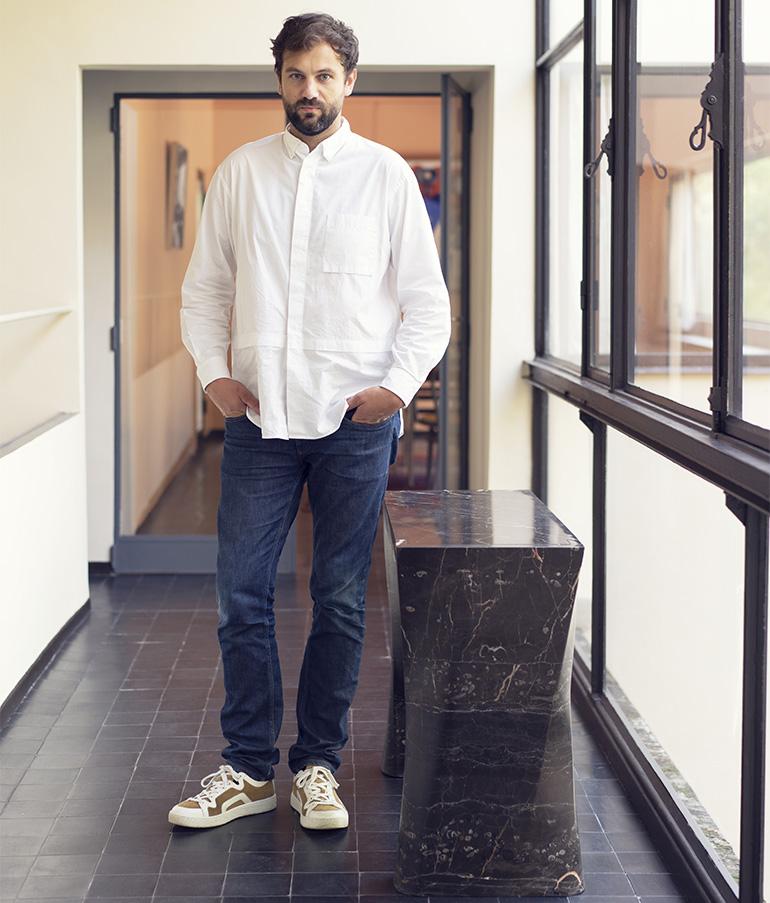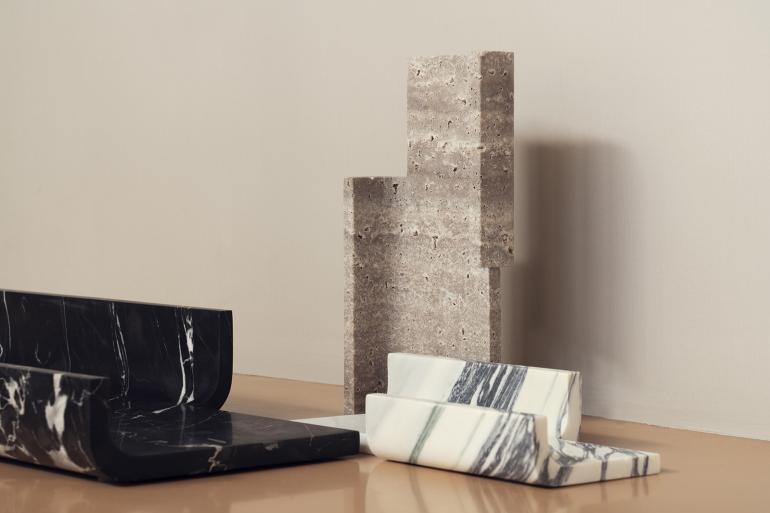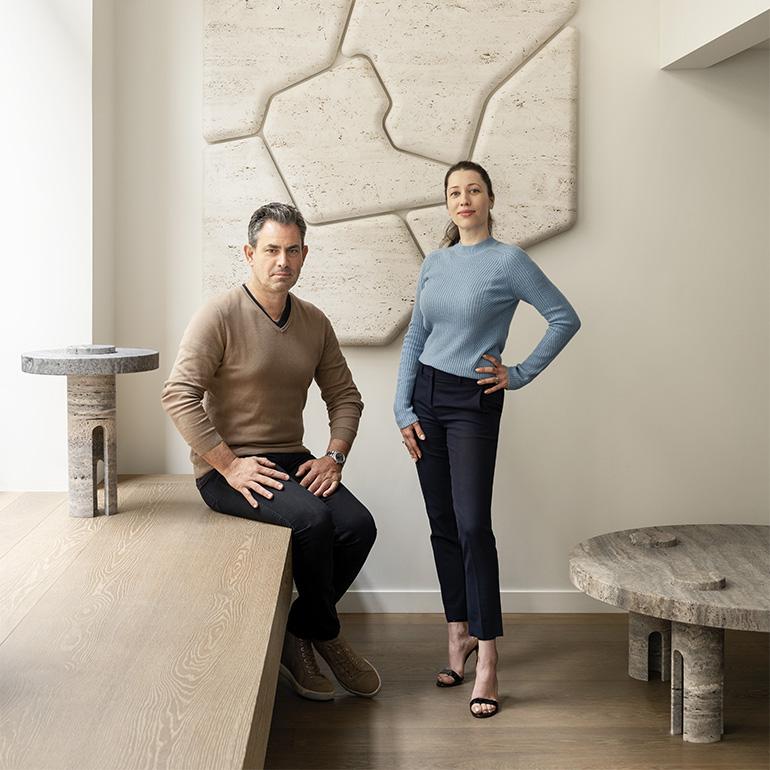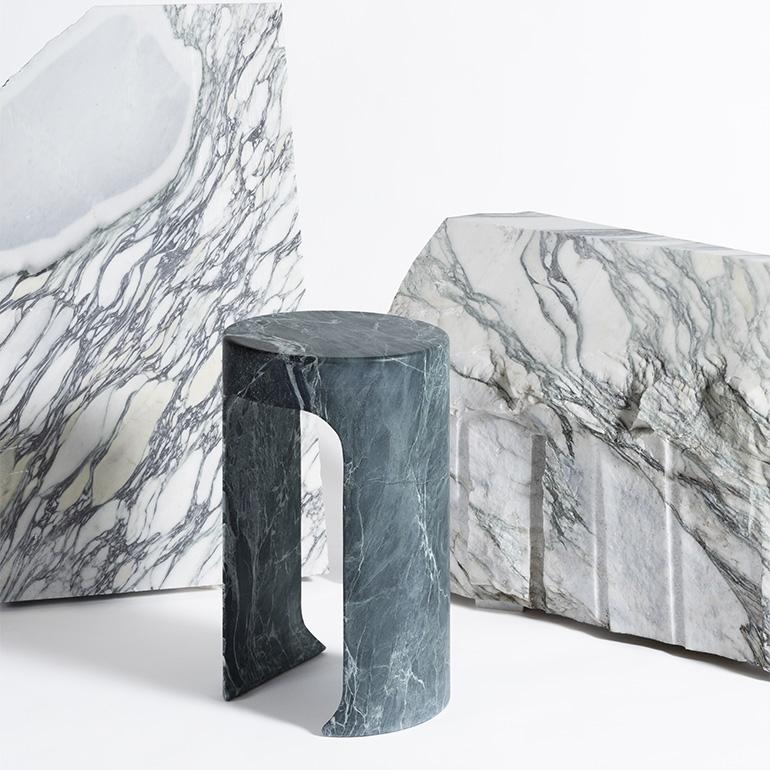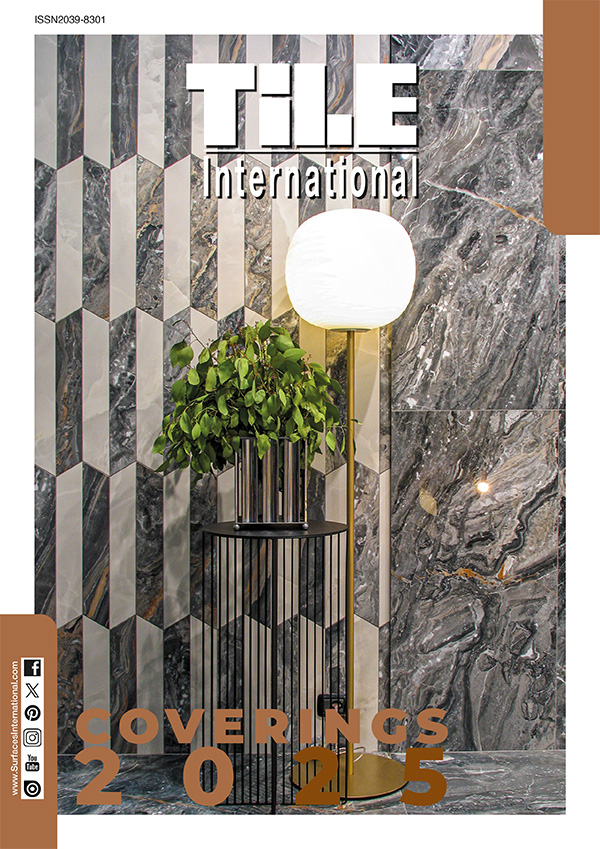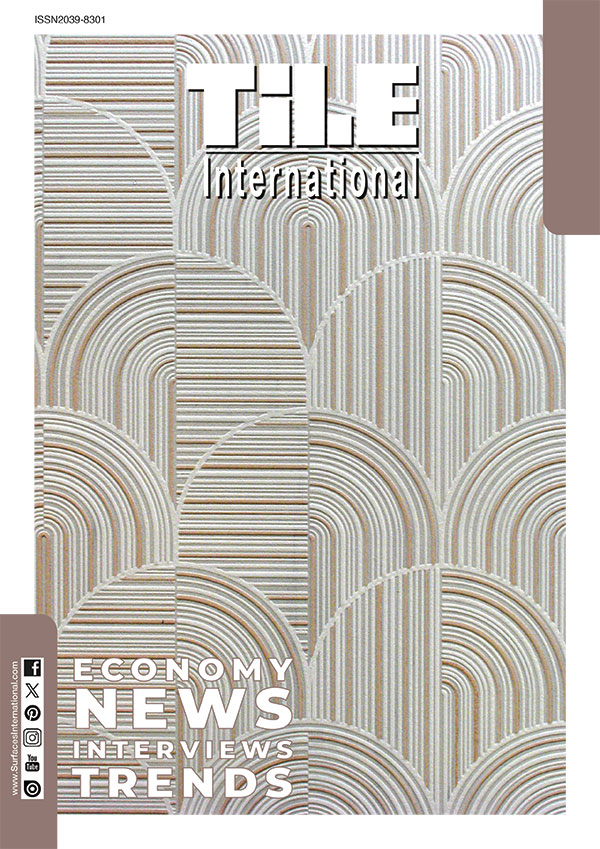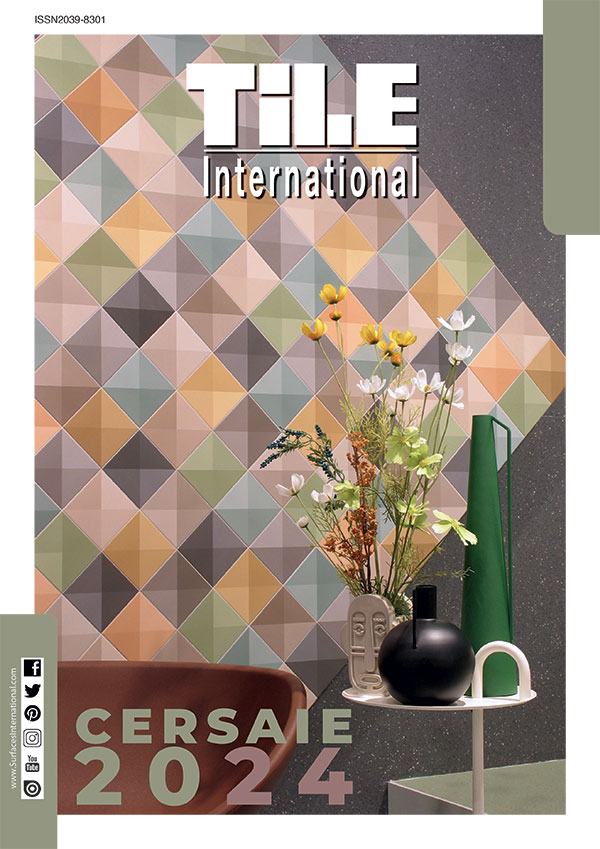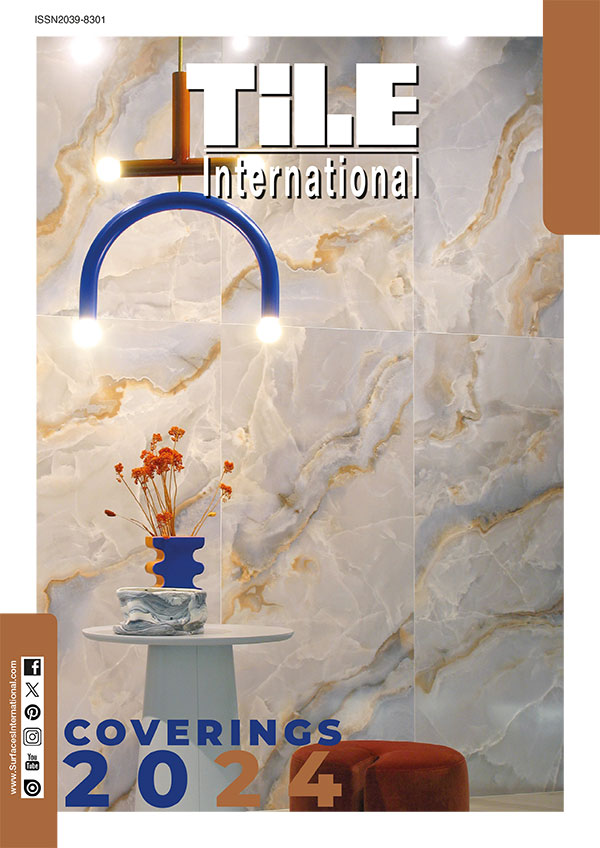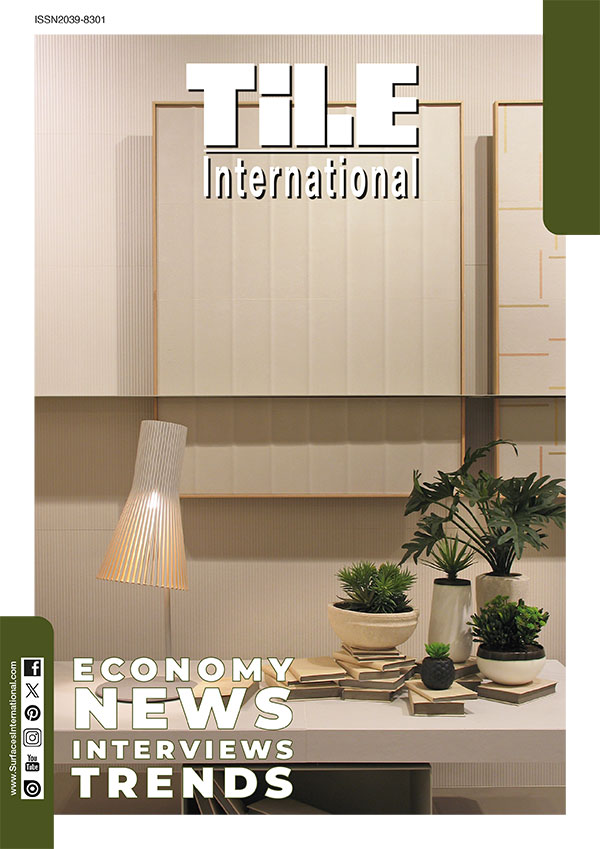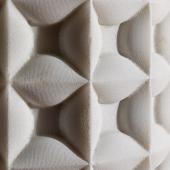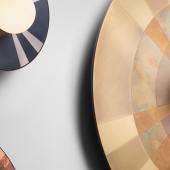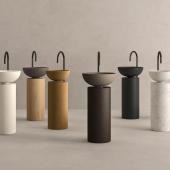Iconoclast maker of furniture and collectible objects
M éditions is a dynamic design company that champions creativity through the celebration and appreciation of a material that is thousands of years old - marble. Each year, they invite several designers to create their own pieces in a somewhat disruptive spirit.
Whether pushing the limits of stone, combining it with metal, ceramics, wood or almost any other material, showcasing new aesthetics through marble is what inspired Jean-Pascal Morvidoni to found M éditions in Paris in 2019. A marble maker for three generations and director of Marbreries de la Seine, he is a lover of beautiful objects and appreciates engaging in dialogue with designers, no matter their style. This is how Thierry Lemaire, Francesco Balzano, Anthony Guerrée and Hugo Toro have all had the opportunity to create their own unique collections.
Always attuned to contemporary design, Jean-Pascal Morvidoni also strives to promote multidisciplinary artists such as Lilian Daddi as well as emerging talents by giving them the opportunity to produce their first collection of furniture and objects. This will be the case, for example, from January 2023 with the unveiling of works by interior designer Romy Lesniowski followed by designers Arthur Vallin and Jimmy Delatour.
Whether the intention for the designs are practical, experimental or quixotic, these collections are exhibited in prestigious venues such as the Le Corbusier Foundation. They are also presented in the M éditions showroom in Paris, designed by Francesco Balzano. A second showroom in Miami, designed by Bismut & Bismut, will open by the end of 2023.
Beyond their formal expression and the pursuit of a certain perfection, each piece produced is intrinsically rooted in marble, an age-old noble material. In order to preserve this natural treasure, M éditions orientates more and more designers toward the use of fragments and blocks of recycled marble, encouraging them to take a more responsible approach without compromising their aesthetic values.
Less is more, the expression coined by the master of the Bauhaus movement, Ludwig Mies van der Rohe, perfectly reflects the intent of M éditions: to astonish and beautify through understatement.
Dolce Collection by Francesco Balzano
As well as designing the exhibition furniture for the Paris showroom, the interior architect and designer also created the first collection for M éditions. Entitled Dolce, in reference to the Dolce Vità and Italian architectural vocabulary, it consists of five pieces (tables, a pedestal table and a stool) with forms that are both sensual and monolithic. The designer has chosen Quatre Saisons Printemps, an extremely textured breccia marble whose mix of accents, ranging from parma to green, grey to gold, gives the furniture an astonishing pictorial appearance. This is a way for Francesco Balzano to remember that he has long wanted to be a painter and that he has a keen eye for all forms of artistic expression. His sources of inspiration are multiple, from the works of the Renaissance to the visual artist Donald Judd, not forgetting the sculptures of Constantin Brancusi or Isamu Noguchi. The Dolce collection is a subtle dialogue between the purity of drawing and the strength of stone.
Tempio Collection by Francesco Balzano
Like a formal manifesto halfway between sculpture and furniture, Francesco Balzano’s Tempio collection is rooted in the designer’s early architectural emotions: from the Villa Malaparte, filmed xby Jean-Luc Godard in Contempt, through visits to monumental marble quarries in Italy, to Michelangelo’s Pieta in St Peter’s Basilica in Rome. With a line that is both brutalist and purist, through which light, movement and matter freely dialogue, he pays tribute to his major influences. The Tempio collection is made up of five pieces of furniture, each limited to 12 copies, in white onyx and large antique marble. These two strong mineral materials are often present in Francesco Balzano’s work.
Villalba Collection by Thierry Lemaire
With their perfect silhouettes and masterful geometry, Thierry Lemaire’s creations are instantly recognisable. The interior designer is part of the great tradition of 20th century decorative arts, characterised by a preference for noble materials, elegant lines and a precise attention to detail. Both sophisticated and timeless, the Villalba collection consists of 11 pieces: a console, stools, lamps and dining tables, as well as a pedestal table that can be cleverly assembled in pairs or double pairs. The result is a striking contrast of materials between travertine, marble and onyx.
Fragments Collection by Anthony Guerrée
The designer examines two different mythologies: Greek architecture and Le Corbusier. Beyond the literal or figurative sense, he draws on his personal universe and his aesthetic convictions. Anthony Guerrée’s work is at once grounded in a thousand-year-old history and in the foundations of modernity. He offers a spectacular reading of this history thanks to spectacular pieces of marble, which were too small to be used in interior architecture. The “Fragments” collection is composed of functional furniture and objects, from coffee tables to pencil cases, from loungers to pocket trays, from consoles to floor lamps. Three lines – “Dorik”, “Ionik” and “Corinth” - coexist and confront each other, inspired by the three ancient architectural orders: Doric, Ionic and Corinthian. Anthony Guerrée wished to make this explicit reference to architecture, and moreover to the wonder felt by Le Corbusier when he discovered the Parthenon. Each piece is an introductory walk that finally sheds light on the rational use of resources: the fragments of marble worked and transformed by Anthony Guerrée evoke the recycled stones filling the concrete framework of the Notre-Dame du Haut Chapel, built in the Vosges by Le Corbusier in 1955.
Mamma Collection by Lilian Daddi
The Mamma collection is also a tribute by Lilian Daddi to his Italian mother. It is to this mamma that the artist refers to by relying on the softness of the lines of these clouds, the generosity of their forms and the power of their presence. After a series of drawings and paintings, the artist worked with Carrare marble to make this large collection composed of console and pedestal tables, stools, and shelves. The durability of the stone resonates with the lightness and the evanescence of the source of inspiration. The earth and the sky meet. Sensual and organic, the pieces emerge from the mineral, just cut short by the force of the water. They succeed in being both functional and exuberant. The Mamma collection also offers a range of lamps – table, wall and suspension - as well as ceramic vases, another natural material. Each work is published in 12 copies.
Collection Amanecer de Hugo Toro
The architect and designer Hugo Toro explores his Mexican origins through the creation of a series of furniture pieces in travertine and Macassar ebony. Amanecer, the name of this collection, means dawn in Spanish, which can be interpreted as a return to the origins, to the original character, expressed here by very bold sculptural forms. The vanishing points and ascetic platforms evoke the stepped pyramids, millennia-old masterpieces of pre-Columbian architecture. Hugo Toro adopts a certain timelessness, reinforced by the raw and dense character of travertine. The irregularities and roughness of this sedimentary rock contrast with the gentle caress of the precious wood. Like an allegory of the first light of day, the Amanecer collection is revealed in sunny hues, so evocative of the designer’s universe. The tables, seats and lights are available in yellow or red travertine, some of which are combined with Macassar ebony. Others can be made entirely of this exotic wood. The collection is available in a limited edition of 12 pieces, except for the wall lamps and the floor lamp.

